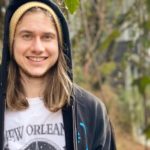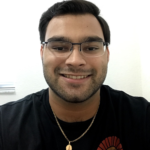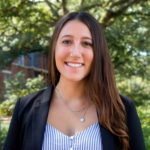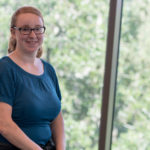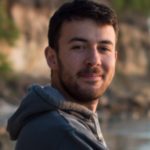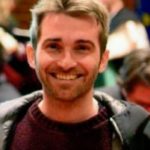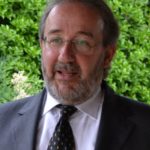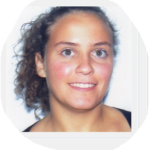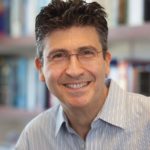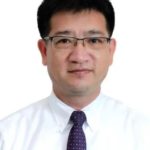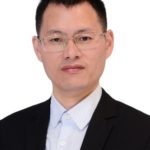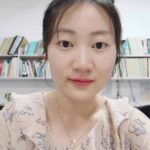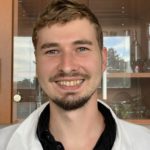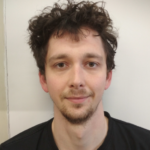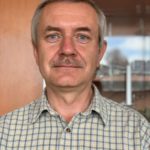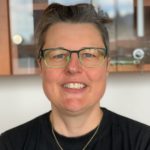OBC is delighted to introduce our Editor’s Choice collection!
This collection showcases some of the best articles published in the journal, handpicked by our Associate Editors and Editorial Board members. This month we have a selection of recent OBC articles chosen by our Associate Editor Cristina Trujillo.
Meet the Editor
Dr Cristina Trujillo obtained her Ph.D. in Theoretical and Computational Chemistry in 2008 at the Universidad Autónoma de Madrid. Between 2008-2016 she held several Postdoctoral positions at CSIC, Czech Academy of Sciences and Trinity College Dublin (TCD) before becoming a Research Fellow at TCD from 2016-2018 and subsequently working as an Assistant Lecturer at TU-Dublin. She started her own research group at TCD in 2019 before moving to the University of Manchester in 2022 where she is currently a Lecturer in Computational & Theoretical Chemistry.
Her research interests are focused on the asymmetric catalysis field, with particular emphasis on the application of computational techniques in the design of organocatalysts along with prediction and control of catalytic processes, with a direct impact on the development of products with different applications.
Cristina’s favourite articles
Friedel-Crafts reactions for biomolecular chemistry
Jun Ohata
Org. Biomol. Chem., 2024, 22, 3544-3558
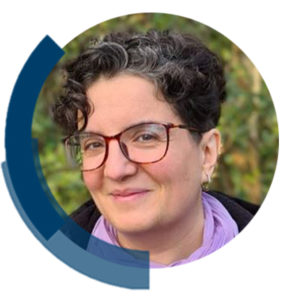 “This review delivers a comprehensive perspective on the growing field of Friedel–Crafts reactions in biomolecular chemistry, charting new directions in the selective modification and functionalisation of complex biological molecules. The author highlights the power of Friedel–Crafts processes for creating C–C bonds within challenging biomolecular settings, spotlighting recent advances and experimental strategies that bridge traditional organic methodologies with modern chemical biology. This synthesis of conceptual and practical insights makes the review a compelling read for both organic and bioorganic chemists interested in innovative molecular construction.”
“This review delivers a comprehensive perspective on the growing field of Friedel–Crafts reactions in biomolecular chemistry, charting new directions in the selective modification and functionalisation of complex biological molecules. The author highlights the power of Friedel–Crafts processes for creating C–C bonds within challenging biomolecular settings, spotlighting recent advances and experimental strategies that bridge traditional organic methodologies with modern chemical biology. This synthesis of conceptual and practical insights makes the review a compelling read for both organic and bioorganic chemists interested in innovative molecular construction.”
Francisco A. Gómez-Mudarra, Gabriel Aullón & Jesús Jover
Org. Biomol. Chem., 2025, 23, 1673-1682
 “This work investigates a distinctive nickel(0)-catalysed cross-coupling between benzonitrile and alkyl chalcogenols to form C–S, C–Se, and C–Te bonds. By outlining a classic oxidative addition–transmetalation–reductive elimination pathway that unusually engages the Ph–CN bond, the study proposes a general mechanistic platform extending beyond thioethers to their heavier chalcogen analogues. Through kinetic analysis and microkinetic simulations, the authors demonstrate that this strategy could expand synthetic access to organochalcogen compounds of biological and materials relevance while maintaining excellent functional group tolerance.”
“This work investigates a distinctive nickel(0)-catalysed cross-coupling between benzonitrile and alkyl chalcogenols to form C–S, C–Se, and C–Te bonds. By outlining a classic oxidative addition–transmetalation–reductive elimination pathway that unusually engages the Ph–CN bond, the study proposes a general mechanistic platform extending beyond thioethers to their heavier chalcogen analogues. Through kinetic analysis and microkinetic simulations, the authors demonstrate that this strategy could expand synthetic access to organochalcogen compounds of biological and materials relevance while maintaining excellent functional group tolerance.”
Effect of strain and π-acidity on the catalytic efficiency of carbones in carbodiimide hydroboration
Max Schernikau & O. Maduka Ogba
Org. Biomol. Chem., 2025, 23, 9896-9907
 “Using DFT calculations, this paper explores how structural and electronic factors govern the performance of zerovalent carbon-centred organocatalysts (carbones) in the hydroboration of carbodiimides. The authors reveal that cyclic carbodiphosphoranes outperform their acyclic analogues owing to superior substrate activation and more efficient hydride transfer, as mapped by distortion/interaction–activation strain analysis. The study fills key gaps in understanding catalyst design and reactivity, underscoring the growing promise of carbones as versatile organocatalysts for bond-forming transformations.”
“Using DFT calculations, this paper explores how structural and electronic factors govern the performance of zerovalent carbon-centred organocatalysts (carbones) in the hydroboration of carbodiimides. The authors reveal that cyclic carbodiphosphoranes outperform their acyclic analogues owing to superior substrate activation and more efficient hydride transfer, as mapped by distortion/interaction–activation strain analysis. The study fills key gaps in understanding catalyst design and reactivity, underscoring the growing promise of carbones as versatile organocatalysts for bond-forming transformations.”
We hope you enjoyed reading these articles. Keep an eye out for more of our Editors’ favourite articles in the future























